
Barefoot Shoe Shopping Guide
Shopping for barefoot shoes is different to conventional shoe shopping because you can’t always try them on in store. Unfortunately there is no consensus on what constitutes a barefoot shoe, so whilst shoes may be labelled ‘barefoot’ or ‘minimalist’, there’s no guarantee they’re what you’re looking for.
Choosing Barefoot Shoes in Shops
If you’re fortunate enough to be able to visit a shop that sells barefoot shoes, things might be slightly easier, but don’t get so excited that you forget to check the shoes carefully to ensure they fit!
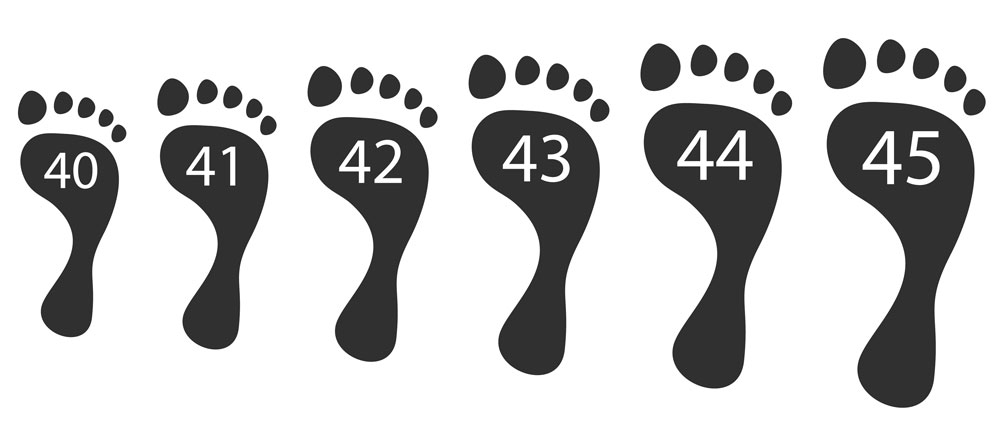
Sizing
The first thing to note is that shoe sizing is inconsistent so you shouldn’t rely on it. Sizing varies from brand to brand and even sometimes between same brand models. So whilst you might start by trying a shoe in your usual size, don’t be scared to size up or down if the sizing doesn’t seem quite right.
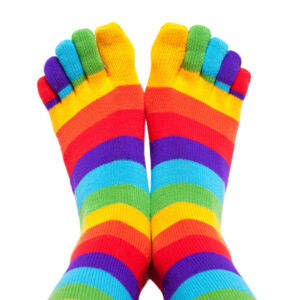
Bring The Right Socks
Be sure to wear (or bring with you) the same socks that you plan on wearing with the shoes you’re buying. When trying shoes, a few millimetres difference in sock thickness can make a big difference to the final fit of the shoe. If you plan on wearing toe socks, or toe spacers, be sure to wear them whilst shoe shopping.
Shop In The Afternoon
Try to go shoe shopping towards the end of the day as your foot is at its largest and whilst performing the shoe liner test or trying on the shoes, put all your weight on each foot one at a time.
Fit Your Largest Foot
Remember that most people have one foot that’s larger than the other. Ensure that your new shoes fit the larger foot to ensure that your toes have enough room. You can always add an insole or tongue pad for the smaller foot.
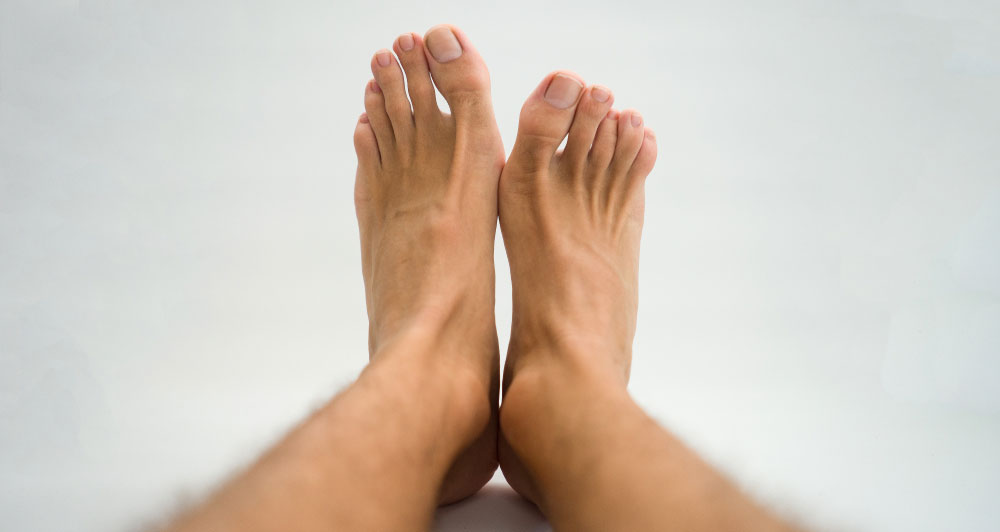
Use The Shoe Liner Test
First of all, try the shoe liner test to assess if the shoes are wide enough where your own feet need it.
Try The Shoes On
If the shoes pass the shoe liner test, try the shoes on in order to assess them for other aspects of fit. In general, you need to have about 1-1.5cm of room inside the shoe in front of your longest toe, and ensure that the upper is not tight across your toes. Similarly, you don’t want so much room around your toes that you feel like you’re wearing flippers!
- Are the shoes secure on your feet?
- Can you adjust them so that they are not too tight or too loose across your midfoot or instep?
- Are the upper materials flexible and comfortable?
- How flexible is the sole?
- How does the shoe feel as you walk?
Choosing Barefoot Shoes Online
When choosing barefoot shoes online, it really pays to do a little research before you buy. Not all barefoot shoes are the same shape, because neither are feet! You may also find that some brands may have a range of barefoot models and transition models, or even some brands that sell mostly conventional shoes with one or two barefoot or transition models.
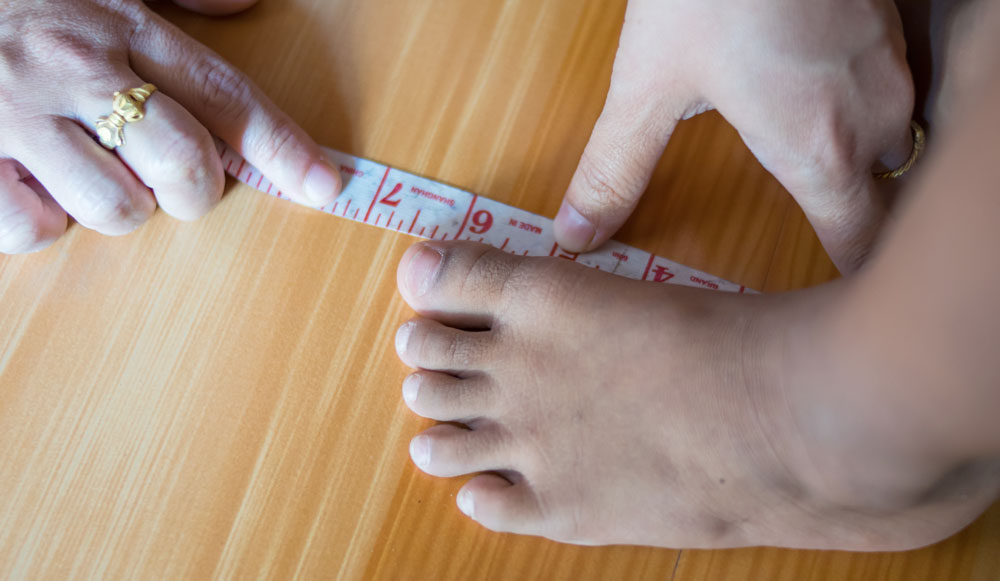
Measure Your Feet
First of all, measure your feet and determine what shape your feet are and whether your feet are narrow or wide, low or high volume. We highly recommend measuring your feet every time you buy, because many people find that their feet change shape after switching to barefoot shoes.
What Kind of Shoe Do You Want?
Are you looking for a casual shoe? Running shoe? Boots? Is there a specific colour you need? Decide how much cushion you want, or whether you want a thin sole that you can add an insole to.
Identify Brands
Determine which brands are suitable for your type of feet and start researching these brands.
Look At Product Images
Take a look at the product images carefully – look for a top down photo to ensure that there’s a wide toe box, and a photo from the side to check for heel rise and stack height.
Read Product Description
Read the product details carefully to see if there’s any information on heel rise and sole thickness. Check the product page to see if there’s a product specific size chart (sometimes different models vary in sizing), if not, check around the site to look for fitting and sizing information – you may find it in the footer menu.
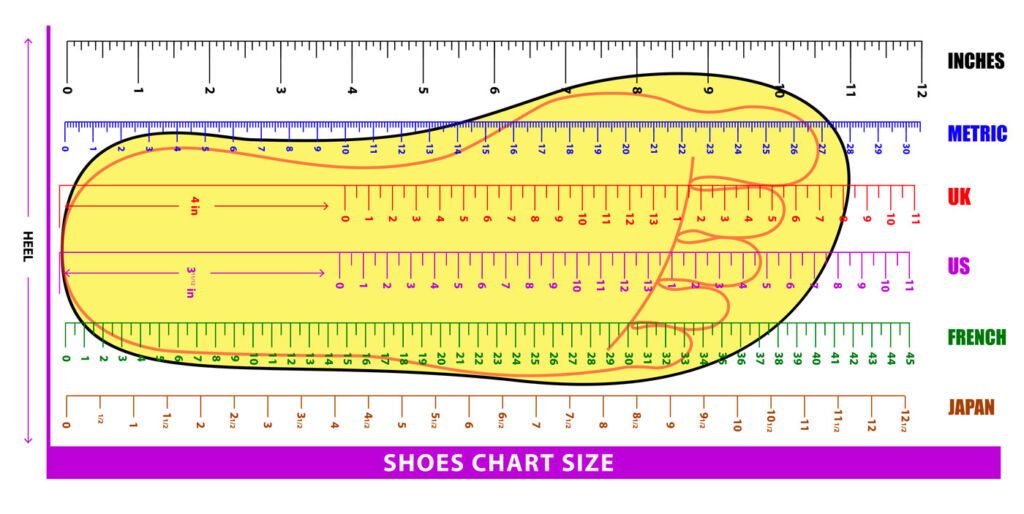
Find Sizing Information
Check the inside shoe length and width measurements and compare with your own feet. If width measurements are not included, you can always email the company to check the width once you’ve established which size fits your length foot.
Find Reviews
Look for product reviews on the site or search for them online to see what other people have to say about the fit or longevity of the shoes. You may also find information about other issues like colour fastness, durability, or shoe care that help you make a decision.
Check Returns Policy
Once you’ve decided on a pair of shoes, check out the company’s returns policy just in case there’s any issue with sizing. Be aware that some payment gateways may have their own returns policies, so you may wish to pay using Paypal or something similar.
Consider Parcel Forwarding
If the company you have selected does not ship to your country, investigate using a parcel forwarding service.
Try On The Shoes
Once you have received your shoes, try them on as soon as you can to see how they fit (see our guidance above). Don’t wear them outdoors unless you’re sure you’re going to keep them.



Get Social…